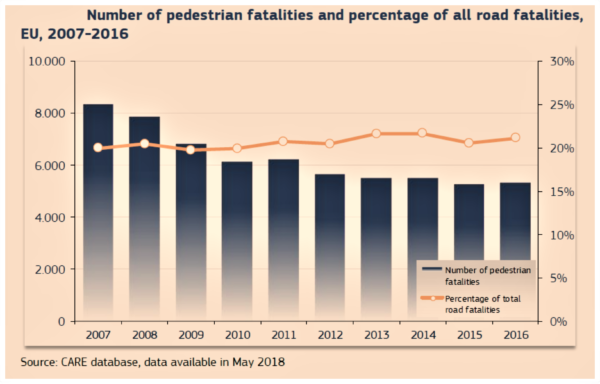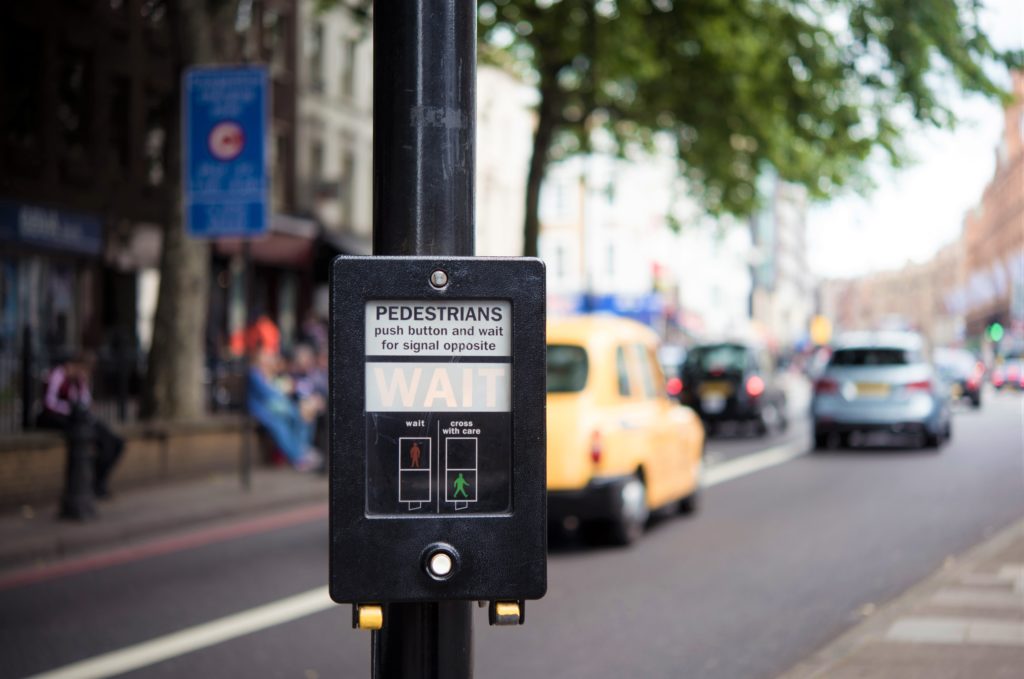Attention!
Over the last few years, vehicular accidents have been gaining space in the list of priorities of the different state administrations. In the big scenario of urban centers, pedestrians are the weakest actors in traffic. In the United States, a new report by the Governors Highway Safety Association(GHSA) determined about 6,227 pedestrians were killed in motor vehicle crashes in 2018, a four percent increase over 2017 and the highest mortality rate since 1990. On the other hand, in 2016, 5,320 pedestrians died in traffic accidents in the EU (except Lithuania and Slovakia), which accounts for 21% of all road deaths. Although the number of pedestrian deaths in Europe decreased during the decade 2007-2016, the respective percentage of all traffic deaths experienced a slightly upward trend.

Starting with some measures
Talking about smart cities we adduce intelligent planning that not only involves sustainable mobility or cutting-edge technology, but also implies operational and efficient measures for society in general. In this sense, countries in view of managing risks for a prudent and well thought out urban planning, have started to apply preventive risk mitigation measures.
In the United States of America, the first steps towards great change are already being taken. In Montclair , California, for example, pedestrians now face a $100 fine for texting or wearing headphones while crossing the street. Honolulu also recently banned distracted walking practices. Pedestrians in the capital of Hawaii can be fined between $15 and $99 for crossing the street while concentrating on their cell phone.
On the other hand, in Europe cities such as Oslo, Madrid, Paris, London have implemented measures prohibiting vehicular traffic in city centers. Although their main objective is the reduction of polluting emissions, clearly the risks of traffic accidents are being notably diminished as well.
One of the great discussions at world level is the prohibition of circulation of the sport utility vehicles in the urban centers. The number of SUVs involved in pedestrian deaths has increased dramatically since 2013. Although automobiles, in general, still account for the majority of pedestrian deaths, SUVs – which generally cause more severe injuries to pedestrians – make up an increasing percentage of registered vehicles.
Undoubtedly, infrastructure initiatives that can also help protect pedestrians include:
- Dedicated Pedestrian Sidewalks
- Clearly marked pedestrian crossings
- Barricades and safety bumpers
- Increased illumination
- Illuminated signalling
- Road-calming measures
An awakening of consciousness
Are the measures in force today sufficient? Certainly not, but at least work began on it. The idea of efficiency, operability and safety in cities is not impossible. For this to happen, politicians and urban planners must make available to citizens a safe and sustainable infrastructure, an effective regulatory support and a prevention system according to current social paradigms. To this we should add the duty of each of the citizens in the construction and preservation of a society where respect for the other is a fundamental value.
Walking is better
All in all, we can contribute to the habit of walking in urban centers, since…
…it is a simple activity, more profitable than a gym fee, healthy and, most importantly, we do not produce traffic congestion, thus our arrival at work on time is guaranteed.
